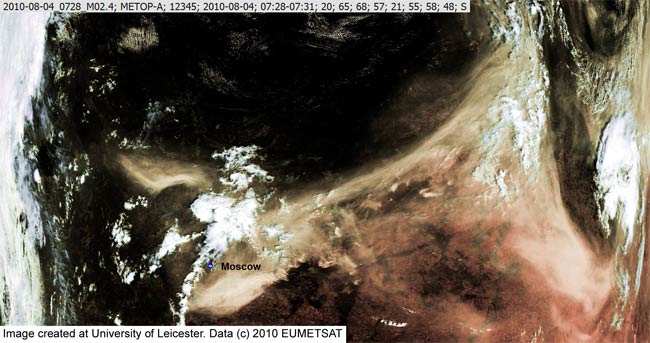Russian Wildfires Create Towering Dirty Clouds

Satellite images of the vast plumes of smoke emanating from the peat bog fires currently sweeping across Russia are revealing a worrisome phenomenon: so-called pyrocumulonimbus clouds.
These are dense towering clouds formed when intense heat from a fire pushes air high into the atmosphere. They have been shown to reach into the lower stratosphere, which begins at an altitude of 36,000 feet (11,000 meters). The clouds can trap airborne pollution and transport it for thousands of miles, researchers say.
"Using measurements from spaceborne instruments, we have been able to observe the vast extent of the smoke released from numerous wildfires in Western Russia," said study team member David Moore of the University of Leicester's Earth Observation Science group. "The pollutants contained within these smoke plumes can have a profound effect on both the local and regional air quality and atmospheric chemistry."
Moore added, "A key aspect of our ongoing investigations will be to quantify the impact the fires have had on indirect greenhouse gases in the atmosphere, such as carbon monoxide."
The images were captured on Aug. 4, 8 and 9 by equipment on the European satellite MetOp-A, and were analyzed by researchers from the university's Earth Observation Science group.
By comparing the each satellite image in true color and false color (in which the smoke shows up as yellow), the researchers could clearly see the extent of the smoke plumes and their encirclement of Moscow, they said.
Since the fires began the smoke plume has spread to cover an area that spans about 1,860 miles (3,000 kilometers) from east to west, according to a NASA satellite image from Aug. 4. If the smoke were in the United States, it would extend approximately from San Francisco to Chicago.
Get the world’s most fascinating discoveries delivered straight to your inbox.
On Wednesday, 520 wildfires were burning around central and western Russia, according to news reports.



